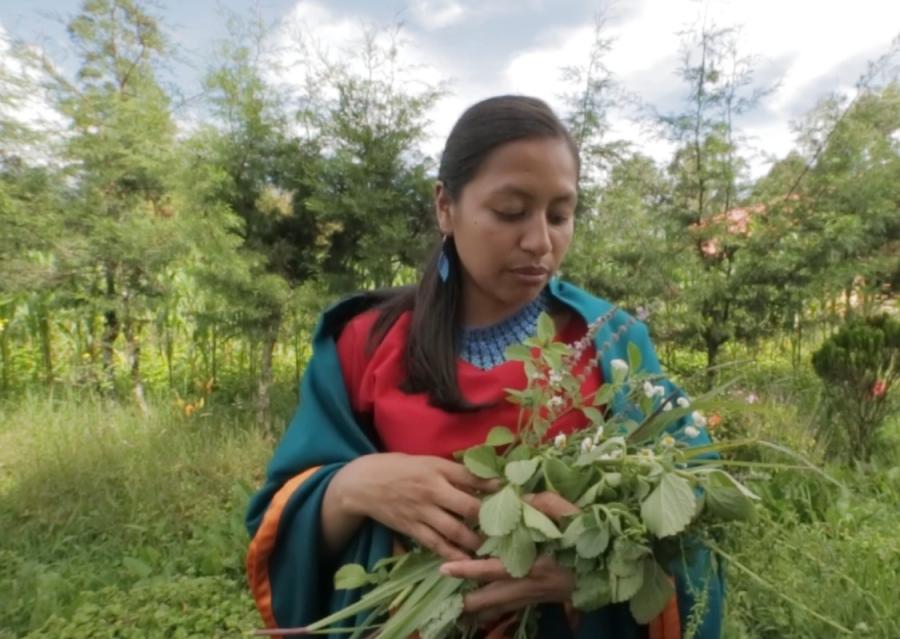
By Stephanie Hon
The UN Committee on the Rights of the Child reviewed Colombia on January 21, 2015. The Colombian Development Plan for the next four years were structured around the key pillars of peace, equity, and education, and Colombia has increased its investment in children from $1.3 billion in 2011 to $2 billion in 2014. Despite these improvements, Colombia is still challenged with addressing inequalities among regions and groups, particularly in regards to Indigenous Peoples.
Colombia has been embroiled in periods of armed conflict between government forces, guerilla groups, and paramilitary organizations for decades. The conflict has caused marginalized populations to suffer, particularly Indigenous people and children, and the internal displacement of many people. Out of the 3 million registered internally displaced peoples in Colombia, about 41,000 are Indigenous. However, Indigenous displacement is often unregistered because of the remoteness of the populations. Economic growth has not been spread equally, and almost a third of the country’s population live below the poverty line. The most excluded are often Indigenous people, who number around 1.3 million in Colombia with 90 different Indigenous groups. Indigenous people face lower rates of school enrollment, lower vaccination rates, and higher rates of infant, child, and maternal mortality. Colombia signed the UN Declaration on the Rights of Indigenous People in April 2009, which upholds the rights of Indigenous peoples and the duty of the State to protect them.
Committee Experts asked about the exclusion of and discrimination against Indigenous children, children of ethnic minorities, and Afrodescendants, and questioned whether affirmative action was being taken to ensure their rights were respected. Extreme poverty in rural areas is 3.2 times higher than in urban areas, while a quarter of the population in majority Indigenous and Afrodescendant areas live in extreme poverty. A Committee Expert asked what was being done to address the exclusion and discrimination suffered by Indigenous people, ethnic minorities, and Afrodescendats. The delegation was asked what affirmative action was being taken to ensure these children enjoyed their rights, and the Committee Expert pointed out how economic development had not led to equal distribution.
The delegation emphasizes that Colombia is not only guaranteeing rights to children, but also creating protective environments for them. Over the past five years, the focus has been on protecting groups vulnerable to discrimination, especially Indigenous peoples, and to aid them in creating their own educational and health systems. Some Indigenous languages are becoming endangered, so the law on the recovery of Indigenous languages was adopted to ensure that Indigenous children socialized in their mother tongues. The Board for Monitoring of Indigenous Children and Childhood was created to strengthen Indigenous communities and ensure Indigenous children received quality services. The Anti-Discrimination Law also allowed for the creation of specific and differentiated projects. Additionally, public investment in education represented five percent of the gross domestic product (GDP), and to extend coverage of education in Indigenous and rural areas, over 19,000 teachers had been trained over the past four years.
The issue of armed conflict displacing children was also brought up. A Committee Expert referred to reports stating that around five million people were displaced in Colombia, more than half of them children. The Committee Expert asked about the efforts of the Government in dealing with the root causes of displacement and to provide protection for displaced children.
The Delegation responded that comprehensive reparation for displaced children was started in 2012 and that since 2004, $15 billion had been invested in the care of the victims of displacement.
While investment in Indigenous children has increased significantly over the last few years, substantial improvements still need to be made, particularly in education and displacement reparation. Development inequality is an issue that plagues all nations, and one that will take long term investments to alleviate.
To read more on the account go here:
http://www.ohchr.org/EN/
Photo credit: .



